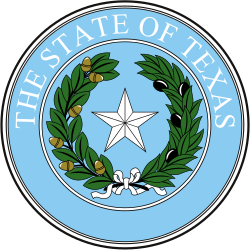Background
Democrats had controlled the Texas Senate since the 1872 elections. [1] Texas had historically been a solidly-Democratic state, owing to its history as a part of the Solid South, but this changed dramatically in the 1970s. Republican Richard Nixon won the state in a landslide in the 1972 presidential election and Bill Clements became the first Republican to win the governorship in over 100 years in a narrow 1978 victory. These victories rarely extended far down the ballot, however, with Democrats still holding large supermajorities in both houses of the legislature. [2]
"Killer Bees" quorum bust
The most controversial bill to come up during the regular session of the 66th legislature was a bill to split the state's primary election, creating a separate March primary for the state's presidential nominating delegates while retaining a May primary date for all other offices. [3] Supporters argued it would give the state more influence in presidential politics, while critics accused them of using the measure to support former governor John Connally, who had recently switched to the Republican Party, in his 1980 presidential campaign. A split primary would have allowed conservative Democrats to vote in the Republican presidential primary while voting in the Democratic primary for other offices. [4] Twelve liberal Democratic Senators left the capitol in May 1979 to break quorum, preventing the chamber from conducting any business. They continued to do so for over four days until Republicans and conservative Democrats agreed to drop the bill. [5]
This page is based on this
Wikipedia article Text is available under the
CC BY-SA 4.0 license; additional terms may apply.
Images, videos and audio are available under their respective licenses.

